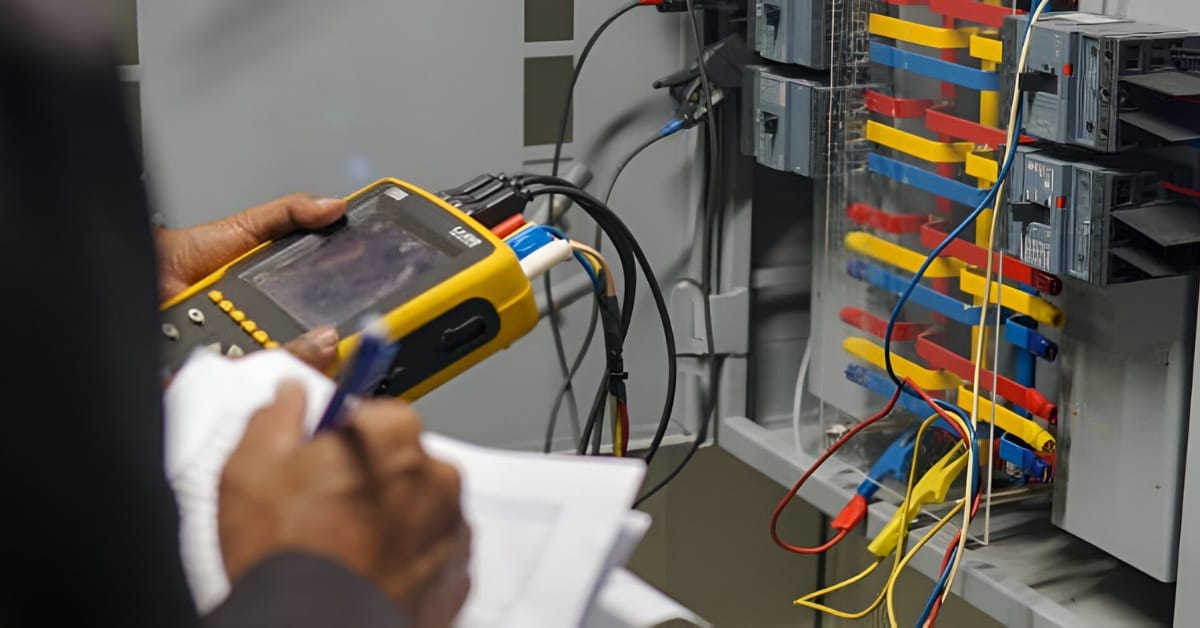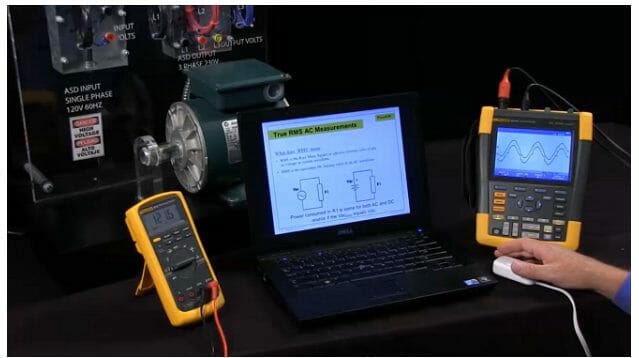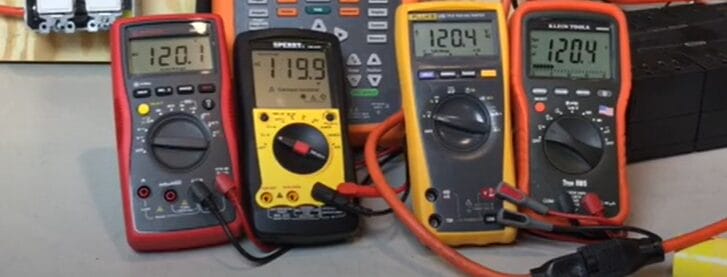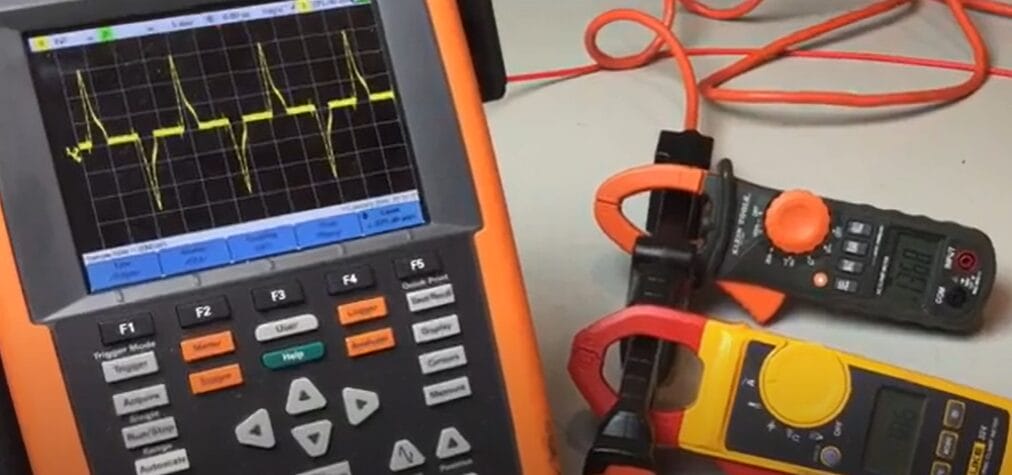What is a True RMS Multimeter (Guide)

Hey there! Let’s discuss how AC electricity has evolved and why a True RMS multimeter is your go-to tool today.
AC electricity was straightforward back then, mostly running on pure sinusoidal waves. But let me tell you, times have changed. With technological advancements, we’re now dealing with various electrical loads and waveforms.
This is where the True RMS (Root Mean Square) multimeter steps into the spotlight. True RMS meters are the real deal; they can handle all sorts of waveforms, giving precise measurements whether you’re working with a sinusoidal or non-sinusoidal wave.
So, in this guide, we’re diving into the world of True RMS in multimeters. Trust me, in today’s dynamic world of electricity, understanding and using a True RMS multimeter is a skill you want in your toolkit.
What is True RMS in Multimeter

Let’s break down what True RMS means when discussing multimeters. True RMS stands for “Root Mean Square,” and trust me, it’s a game-changer in electrical measurements, especially when dealing with alternating current (AC) or AC voltage.
Think of True RMS as your go-to method for truly understanding the power or, as I like, the “heating” potential of the voltage you’re working with. Unlike those average meters that give you a rough estimate, a True RMS meter gets down to the nitty-gritty.
It tells you exactly how much power is being wasted on a resistor. This is crucial because, in my experience, knowing the exact power usage can make or break an electrical project.
Now, let’s talk waveforms. You’ve got your sinusoidal (sine) waves – these are your neat, clean waves with nice symmetrical peaks and troughs. Picture a smooth ocean wave; that’s your sine wave. They’re what you call distortion-free.
But then, there are the non-sinusoidal waves – the wild ones. They come with spikes, pulse trains, squares, triangles, sawteeth, and jagged edges. They’re like the choppy waters in a storm. Most modern electronic loads, like the ones I often work with within smart home installations, produce these non-sinusoidal waves.
In my years of working with all sorts of electrical setups, I’ve learned one thing: if you want to measure AC voltage accurately, especially when it’s not a pure sinusoidal wave, you need a True RMS meter. It makes a difference; you won’t have to second-guess your readings.
Average Response Meter vs True RMS Meter
Let’s dive into electrical measurements and discuss the difference between average responding meters and True RMS meters. This is something I’ve come across time and time again in my work, and it’s key to getting accurate readings.
Average Response Meter

Let’s start with the average responding meters. When they measure pure sinusoidal waves, they do a simple job: they take the average of the high and low points of the wave and multiply that by 1.11 (that’s the conversion factor).
This works pretty well when you’re dealing with straightforward, linear loads. But let me tell you, when the waveform gets a bit more complex or distorted, the average meter can get tripped up. Depending on the waveform, the readings can be off by as much as 40% too low or 10% too high. I’ve seen this happen in projects, and it can lead to some real head-scratchers.
True RMS Meter

Now, enter the True RMS meter. This is the most sophisticated tool in your electrical toolkit. True RMS meters don’t just take averages; they use smart math to calculate the true power of non-sinusoidal and sinusoidal waves. This means they give you the real deal when it comes to measurements.
Let’s talk about real-life applications. Say you’re testing the voltage output on a portable grinder with speed control. You might get a reading of 79 VAC with a True RMS meter.
But if you use an average meter on the same grinder, the reading might drop to 65VAC. That’s an 18% inaccuracy right there. That difference can be huge in my work, especially when you need precision.
To give you a clearer picture, here’s a little chart that I find super helpful:
| Signal Type | Average Responding | True RMS |
|---|---|---|
| Sine Wave | Correct | Correct |
| Square Wave | 10% High | Correct |
| Single Phase Diode Rectifier | 40% Low | Correct |
| Three-Phase Diode Rectifier | 5-30% Low | Correct |
This chart is a lifesaver when figuring out which meter to use for a specific job. Remember, knowing your tools and how they work can make all the difference in your projects. Stay sharp, and keep measuring accurately!
Understanding RMS Calculations in Plain Language

let’s roll up our sleeves and get into the nuts and bolts of RMS (Root Mean Square) calculations. This stuff gives us the real picture of what’s happening in our electrical systems.
The Formula Breakdown
RMS calculations help us understand the equivalent DC (Direct Current) value of an AC (Alternating Current) waveform. Think of it as figuring out how much punch a particular AC waveform packs in terms of power.
Here’s the formula that does the magic:
- For mixed AC and DC currents:

- For high-frequency components:

Real-World Example
Let’s say you have an AC signal of 120 volts and a DC battery at 120 volts; both applied to the same resistor. According to RMS calculations, both should heat the resistor equally. I’ve used this knowledge countless times in my projects to ensure I’m getting the power delivery just right.
The Need for True RMS Measurement
Our electrical currents aren’t just your straightforward sinusoidal waves in today’s world anymore. We’ve got all sorts of waveforms, especially in modern electronic devices.
Where True RMS Meters Shine
- Variable Speed Drives: These are common in motors where speed control is key. The current waveform here can get pretty wild.
- Solid-State Devices: Your everyday electronics fall into this category.
- Electronic Ballasts: Especially in advanced lighting systems.
- HVAC Systems: Modern heating and cooling systems use complex controls.
- Computers: No surprise here; computers are a jungle of complex waveforms.
In all these cases, the current isn’t a smooth wave but more like a series of rapid pulses. This is where your average meter might give you the cold shoulder, but a True RMS meter steps up to the plate.
Why It Matters in HVAC
Take HVAC systems, for example. They’re not just about hot and cold anymore; they’re about efficiency and precision. When working on these, a True RMS meter is indispensable for getting accurate readings, especially with the variable frequencies involved.
Understanding and using True RMS calculations and meters has been a game-changer in my work. It’s all about getting the real picture, and that’s what True RMS helps you do. Keep these insights in your toolbox, and you’ll tackle those complex electrical projects like a pro.
Troubleshooting Common Issues with True RMS Multimeters
Over the years, I’ve run into my fair share of hiccups while using True RMS multimeters.
So, I’m here to share some common issues you might encounter and how to troubleshoot them effectively. Let’s dive in and get those meters working like a charm again.
| Issue | Symptoms | Solution |
|---|---|---|
| Inaccurate Readings | Readings don’t match expectations | Check calibration and ensure the correct settings |
| Non-Responsive Meter | No reaction to measurements | Replace batteries, check leads and connectors |
| Erratic Display | Inconsistent or jumping display | Secure connections, avoid electrical interference |
| Meter Overload | Overload message displayed | Adjust settings and measurement range |
| Continuity Failures | No beep in the continuity test | Check leads, ensure correct continuity test setting |
| Temperature Issues | Inaccurate or missing temperature readings | Check thermocouple connection, consider ambient conditions |
Remember, a little troubleshooting can go a long way. Most issues with True RMS multimeters are easy fixes once you know what to look for. Stay patient, stay safe, and keep measuring accurately!
User Tips and Best Practices for Using True RMS Multimeters
Here are some handy tips and best practices for using true RMS multimeters. Over my years in the field, I’ve learned a thing or two about these nifty devices, and I’m excited to share that knowledge with you.
- Understanding Your Multimeter: First, get to know your true RMS multimeter. Each model has its quirks, so read that manual.
- Safety First: Always prioritize safety. Ensure your multimeter and its leads are rated for the voltages and currents you’re measuring. I’ve seen situations where using underrated equipment led to some dangerous sparks.
- Correct Settings Matter: Use the correct settings for what you’re measuring. I’ve been in scenarios where using the wrong setting gave me incorrect readings, leading to unnecessary troubleshooting. Double-check your settings to see whether they are AC or DC voltage, current, or resistance.
- Regular Calibration: Keep your multimeter calibrated. I’ve learned the hard way that an uncalibrated multimeter can lead to inaccurate readings, which, in electrical work, can mean the difference between a job well done and a job that needs redoing.
- Proper Lead Placement: Always place your leads correctly. The black lead typically goes into the COM (common) port, and the red lead goes into the port for measuring voltage, resistance, or current. I’ve mixed these up more times than I’d like to admit, which usually results in some head-scratching moments.
- Avoiding Assumptions on Waveforms: Remember, not all waveforms are created equal. True RMS multimeters are fantastic because they give accurate readings regardless of the waveform. I recall working on a commercial project with loads of different electronic devices. A true RMS multimeter was crucial for getting correct measurements, especially with those pesky non-sinusoidal waveforms.
- Check for Continuity: Don’t overlook the continuity function. It’s a lifesaver when checking whether a circuit is complete or a wire has broken.
- Respect the Limits: Understand the limits of your multimeter. Don’t try to measure beyond what it’s rated for.
- Stay Alert: Always stay alert and focused when using your multimeter. Electrical work is no joke, and a lapse in attention can have serious consequences.
With these tips, you’ll get the most out of your true RMS multimeter and ensure you work as safely and efficiently as possible. Stay sharp out there!
Frequently Asked Questions
- How Does Temperature Affect True RMS Multimeter Readings
- Temperature can impact the accuracy of electronic components inside your multimeter. Higher temperatures might lead to slightly higher readings and vice versa. Using these devices within the recommended temperature ranges is best for optimal accuracy.
- Can True RMS Multimeters Measure Pulsating DC Currents?
- Yes, they can. True RMS Multimeters can accurately measure pulsating DC currents, a huge advantage when working with certain types of electrical equipment.
- Is There a Significant Price Difference Between True RMS and Average-Responding Multimeters?
- Generally, True RMS Multimeters are a bit pricier due to their advanced measuring capabilities. However, the investment is worth it for the accuracy and reliability they provide, especially in professional settings.
- Can a True RMS Multimeter Be Used for Testing Electronic Circuits?
- They’re ideal for testing electronic circuits, especially those with variable frequency drives or non-linear loads. They give you the real picture of what’s happening in the circuit.
- How Does a True RMS Multimeter Differ From an Oscilloscope?
- A True RMS Multimeter provides numerical voltage or current readings, while an oscilloscope visually displays the waveform. Multimeters are for precise measurements, whereas oscilloscopes are for waveform analysis and troubleshooting.
References
Organizations:
- IEEE (Institute of Electrical and Electronics Engineers). https://www.ieee.org/
- National Institute of Standards and Technology (NIST). https://www.nist.gov/
Books:
- “The Art of Electronics” by Paul Horowitz and Winfield Hill. https://artofelectronics.net/
- “Electrical Measurement, Signal Processing, and Displays” by John G. Webster. https://www.abebooks.com/9780849317330/Electrical-Measurement-Signal-Processing-Displays-0849317339/plp
Website Resources:
- Fluke Corporation. https://www.fluke.com/
- All About Circuits. http://allaboutcircuits.com/
- EEVblog. http://eevblog.com/
Video References:
Fluke Corporation
MultiMeter Channel
